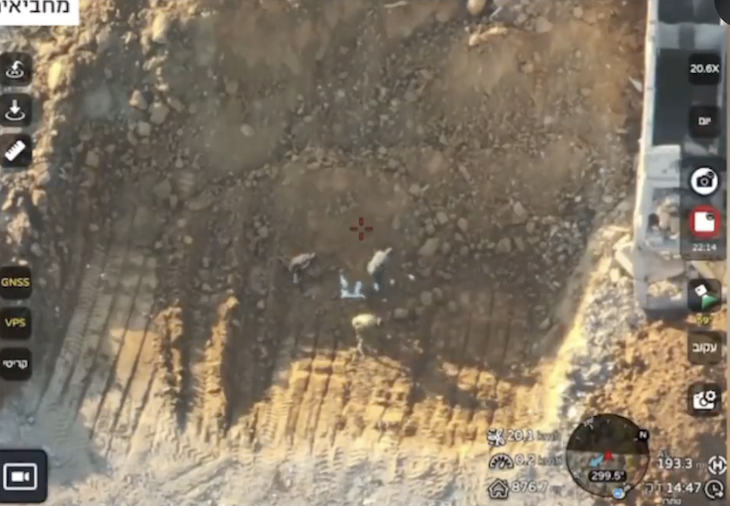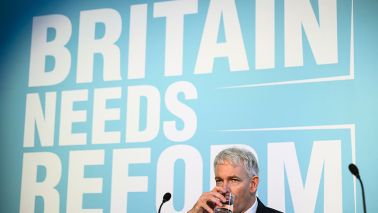Serbia has been gripped by months of student protests in response to a tragic accident at Novi Sad railway station in November 2024, when the collapse of a concrete canopy roof claimed 15 lives. The protests have come to resemble a sort of May ’68 moment. Not in the sense that they are occurring in the same global context of cultural change, social liberation and anti-war activism. The demands of the protesters today are much narrower. But the students’ inventive tactics, grassroots organising, daily blockades and sit-ins at universities invite such comparisons.
The president offered his condolences for the dog Donna, who was run over during a protest
What began as an outpouring of anger in response to the fatal incident in Novi Sad has morphed into a broader movement calling for accountability, and an end to systemic corruption, which many blame for the defective infrastructure at a railway station that had only recently been renovated. The canopy falling was the most obvious example to many Serbs of the ways corruption has become endemic. In today’s Serbia, bribery and corruption have become a way of life. Whether you want a hip operation or a building permit, you have to pay if you want something to happen.
Months of protests culminated this week in the resignation of the prime minister, Milos Vucevic, and that of the mayor of Novi Sad, Milan Djuric. It is now safe to say that president Aleksandar Vucic and his Serbian Progressive Party (SNS) are facing their most serious political challenge since coming to power in 2012.
The student protests have attracted global attention in recent weeks, mobilising huge crowds of up to 100,000 people in the capital Belgrade. They have garnered support from diverse groups, including farmers, IT experts, doctors, lawyers and famous sports personalities, such as Novak Djokovic. At a press conference in Melbourne, Djokovic expressed sympathy with the protests: ‘My support always goes to young people, students and all those to whom the future of our country belongs’, he said.
On January 27, students led a 24-hour blockade of a busy traffic junction in Belgrade. They were joined by their professors, farmers who came on their tractors from nearby villages, processions of bikers and eventually what seemed like the whole city. The protest was jovial. Students kept themselves entertained by roasting pigs on spits, playing games of ‘blockade basketball’ and dancing the Kola. State media jumped on the festivities, dismissing the protesters as silly students who spent their day partying in between commemorating the victims of Novi Sad.
The media’s attempt to downplay the protests was short-lived. Later that night, the president took to national television and essentially heeded all of the demands of the protesters. He agreed to release hundreds more documents related to the station reconstruction in Novi Sad, and to pardon students and professors who had been arrested during previous protests. He also promised a sweeping cabinet reshuffle. The government had already got rid of ministers who were directly linked to the disaster, notably Goran Vesic, the former transport minister who was arrested and indicted for public endangerment.
In his address, Vucic said he was sad that, in the previous weeks, the government and students “didn’t talk to each other”. He called for dialogue and said he was willing to speak to students over a game of chess. The president offered his condolences for the dog Donna, who was run over during a protest the week before. Vucic said he had such a tragedy twice in his house. ‘You look at your child suffering because of a dog and your throat tightens, you struggle…how can you not feel sorry for the dog?’ The speech was comparable to the moment Yugoslav president Josip Broz Tito told students they were right in June 1968, following weeks of demonstrations and police violence.
The president’s attempt to kiss and make up was complicated, however, when news broke out a few hours later that some of his party’s henchmen had beaten up girls with baseball bats, after chasing activists away from their party offices in Novi Sad. The next day, the prime minister and the mayor of Novi Sad resigned. The government had caved under pressure, and Vucic was promising to sack half his ministers. Despite its initial attempts to paint the protesters as foreign mercenaries, dispatched and funded by Western NGOs to destabilise Serbia, the government had ultimately conceded that it was in the wrong.
The president’s concessions give the impression of a government under pressure. Vucic seems rattled by the scale of the protests and their persistence; he probably expected that like previous protests, such as those against lithium mining or against violence in the wake of two mass shootings in 2023, the students would have given up by now. Instead, the protests are drawing ever greater crowds. And not just in the usual strongholds of opposition. Protests have spread beyond Belgrade to over a hundred towns and cities, including Nis, Kragujevac, Cacak, Subotica, Gornji Milanovac and Mladenovac. They have also spread overseas to London, Paris, New York, Chicago, Washington, Toronto, and wherever else there is a significant Serbian diaspora.
The concessions may succeed in dampening the current fervour, but they are unlikely to end the protests altogether, given that the latter are driven by a broader dissatisfaction with the government. Protests continued on 28 January in Novi Sad, fuelled by outrage over the violent attacks on protesters the night before. Students in Belgrade announced plans for another protest today, when they will walk from the capital to Novi Sad. Instead of placating the protesters, the government’s conciliatory efforts may simply encourage them to go further in their demands, sensing their enemy’s weakness.
Serbia now faces the prospect of fresh elections. The government must elect a new prime minister, either through parliament or through national elections. President Vucic will be weighing up his options and wondering whether what has worked for him in the past will work again. Holding a snap election every few years became a habit for the president, who took advantage of the weakness of the political opposition to reaffirm his and his party’s legitimacy by going to the polls. In this instance, the students are far ahead of the opposition, which is not popular even among the protesters, never mind the wider population.
Despite the risk of the SNS losing its parliamentary majority, president Vucic may see elections as the best exit from the current crisis. Simply selecting a new prime minister and reshuffling his cabinet might give the impression of another cynical fix. It would be a gamble, but one Vucic has taken many times before.







Comments